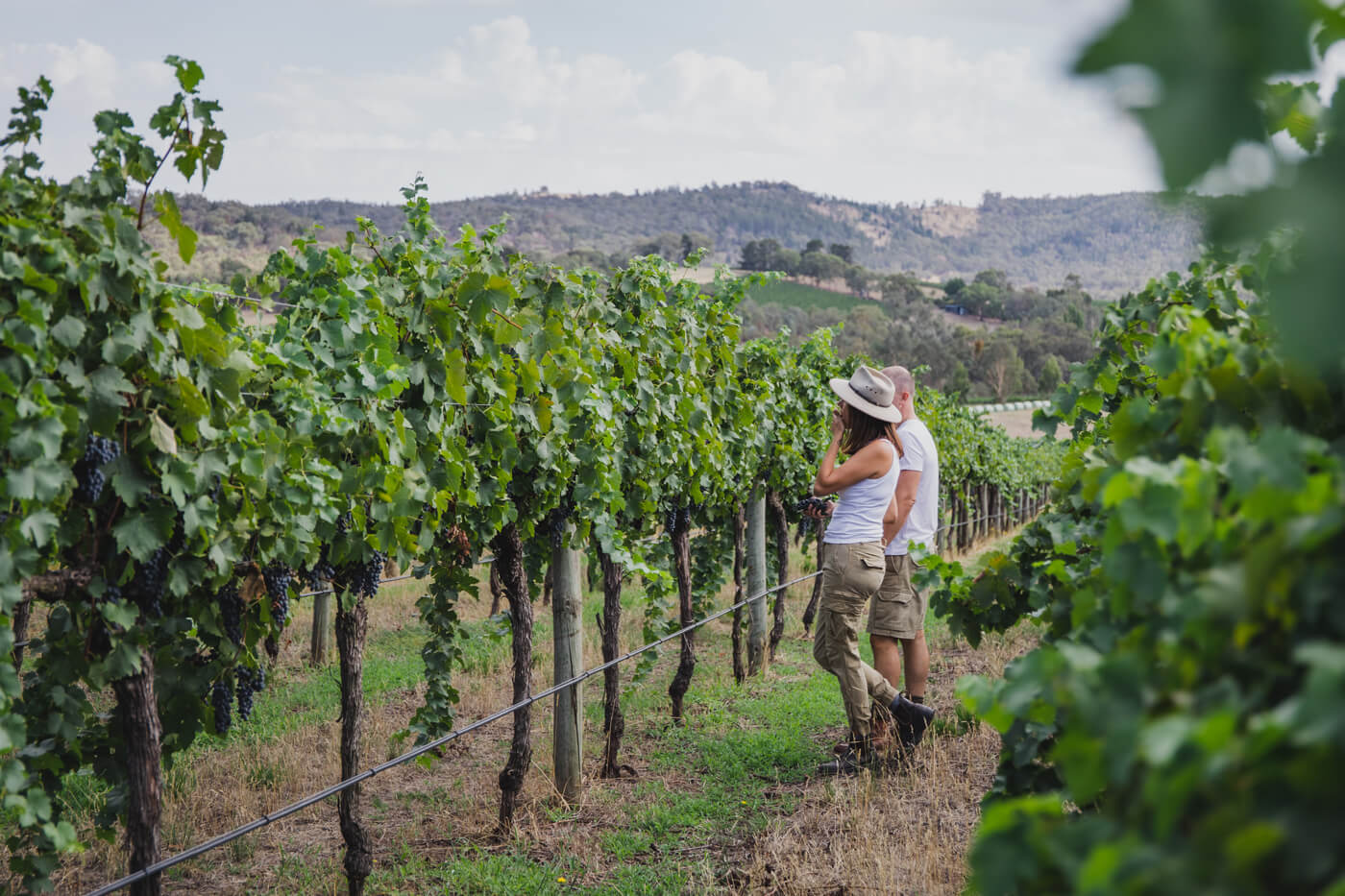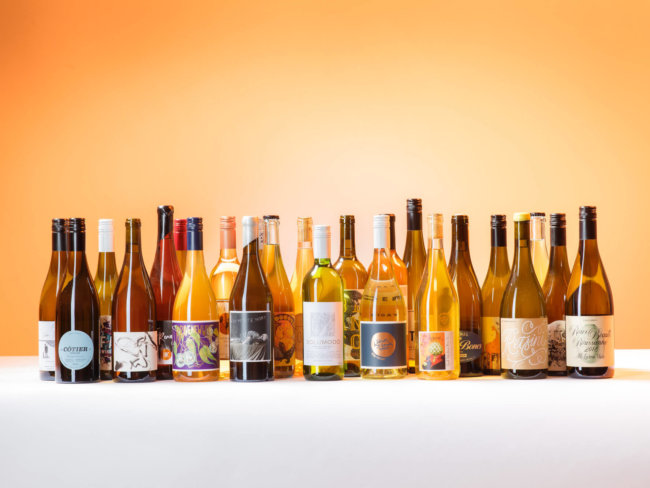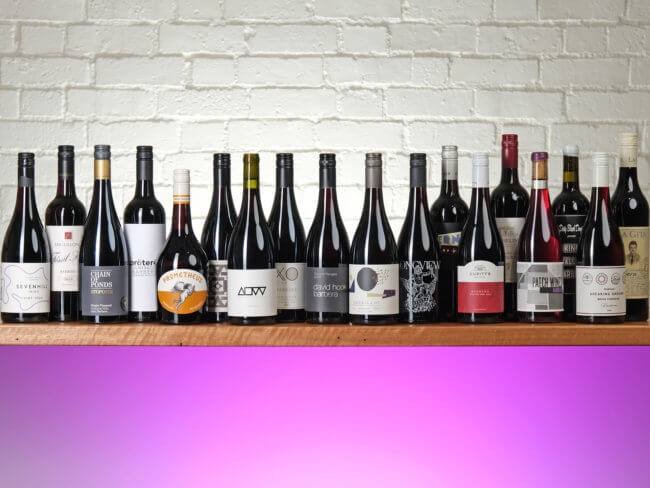There’s something stately about the Beechworth wine region, with a sense of history, a sense of establishment that belies its relatively new viticultural status and frugal output. Perhaps it’s the town, with the pomp of its sandy hued stone buildings, the whole Gold Rush spectacle of it. Perhaps it’s the imprint of iconic makers, like Giaconda, Sorrenberg and Castagna. Perhaps it’s a combination. But whatever it is, don’t take this to mean Beechworth is set in its ways. It is a region of extraordinary untapped potential, with the ranks of newer makers swelling and testing the limits. This year’s Young Gun Top 50 includes Sentio and Weathercraft, two of that new guard, and our Young Gun for 2015 was Adrian Rodda, who has been charting his own course in the region for nearly a decade.
You’d have to like driving to make Beechworth a day trip from Melbourne, with six hours in the car the best-case scenario. That doesn’t stop it being a vibrant tourist destination, with plenty of restaurants, wine shops and the like, and they stack up more than favourably against their big city counterparts. Beechworth also does accommodation very well – which is perhaps unsurprising given that six-hour round trip.
Like many Victorian wine regions, Beechworth was planted in the 19th century, before general economic decline saw vineyards shrink, then disappear, with phylloxera thought to have hammered in the proverbial last nail. A sole vineyard was planted in the 1940s, which Brown Brothers eventually bought and then sold in the late 70s, with it too spiralling into decline. The Smiths site was planted in 1978, so it’s the oldest surviving vineyard of the renaissance, with Giaconda’s first plantings made two years later.
![]()
Established in 1978, the Smiths Vineyard is planted to chardonnay, cabernet sauvignon and merlot – which today make their way into some of the wines from A. Rodda Wines and Fighting Gully Road. The vineyard sits 550 metres above sea level, and crosses-over the two soil types that define the Beechworth region: the shaley red Ordivician soil and the granitic soil.
A taste of things to come
Although there are only a couple of dozen producers in the region, some of Australia’s best-known elite labels hail from Beechworth. Chardonnay and shiraz are the leading varieties, but there’s also game-changing nebbiolo and gamay coming out of the district. The mark made by players like Giaconda have set the varietal tone of the district, but generalisations that may seem apt today will likely be less valid in the future.
Chris Catlow of Sentio sources fruit from his Beechworth base, as well as other regions, and he believes that Beechworth’s potential has barely been tested. “They have built a sense of purpose and history for this place and highlighted some pretty amazing spots, but fundamentally time will tell. The best vineyards probably aren’t even planted yet. There’s no way with 20 or 30 vineyards planted that you’re going to have everything in the right place.”
“They have built a sense of purpose and history for this place and highlighted some pretty amazing spots, but fundamentally time will tell. The best vineyards probably aren’t even planted yet. There’s no way with 20 or 30 vineyards planted that you’re going to have everything in the right place.”
Weathercraft’s Raquel and Hugh Jones came to the region after looking for an opportunity across Victoria’s regions. Beechworth was in their sites, as they had a long-held appreciation for the wines, but so was Macedon and the Yarra. The opportunity to buy a mature vineyard (then owned by a former Brown Brothers CEO) was tempting enough, but its exceptional potential for Spanish varieties – principally tempranillo – sealed the deal.
![]()
Shiraz vines at Weathercraft’s vineyard, with Mount Pilot range in background.
“We were very excited to find a site that suited tempranillo,” says Raquel. “We’ve also made some albariño to see how that goes, and we’re going to plant a couple of other Spanish grapes when we expand our chardonnay vineyard. Mencia is something I enjoy, and if I can get some white tempranillo or another white… We’ve got different soil profiles across our 10 acres and we’ve planted or grafted accordingly to varieties that suit those profiles.”
Chris also stresses the importance of soil profiles when sourcing fruit or planting vines. “Probably half have the granitic soil profile, and half have the shale-based soil,” he says. “I like to see chardonnay on the granitic soils. They are more savoury and have more of a mineral edge. The red shale soil is going to create something slightly richer, with more primary fruit, but with things like nebbiolo, the red soil is amazing for the tannin structure.”
“I like to see chardonnay on the granitic soils. They are more savoury and have more of a mineral edge. The red shale soil is going to create something slightly richer, with more primary fruit, but with things like nebbiolo, the red soil is amazing for the tannin structure.”
And while he believes the future potential is vast, Chris sees Beechworth as a special place for chardonnay. “I link Margaret River and Beechworth [chardonnay] together in terms of their power and weight, and the tricky thing is getting the right balance, getting the power without them being too weighty. But that power is our greatest asset. On the counterpoint to that, red wines end up being medium-bodied most of the time. Beechworth makes savoury, medium-bodied, spicy reds, and it’s really hard to get a red beyond that.”
Tapping the local legends
Both Raquel and Chris emphasise that while the Beechworth wine community is small, it is both tightly knit and very supportive. “Ultimately that’s Beechworth’s biggest strength,” Chris says. “Beechworth as a group is very open and always willing to help. The original guys from the region are amazing with the knowledge they give. Barry at Sorrenberg for example, has been amazing, he’s incredible.”
“The community is wonderful,” Raquel adds. “We have been absolutely welcomed. There are lots of different personalities in the Beechworth Vignerons Association, and I’ve learnt so much. And for me, especially from Mark Walpole [of Fighting Gully Road]. They’ve absolutely opened themselves up, 20 questions 100 questions… There are the traditionalists, but if you’re doing something different, they look on and say, ‘that’s really interesting’. It’s hugely positive.”
![]()
Chris Catlow at work.
A wave of newer makers and the established guard interacting so seamlessly is near to unheard of, and a priceless asset for the dynamic development of the region as a whole. “It is an amazing thing to have a group of younger winemakers come here, or move back, or move in from different regions. The group that were here originally have created something incredible, and to work with them and create new energy and new ideas going forward is great,” Chris reflects.
While Beechworth may have the composure of an established region, the solidity of the known, the future is looking glitteringly bright, and ultimately that future will be more diverse than it will be homogenous. “With its large range of altitude – it goes from 300 to 900 metres – the region is just so diverse,” adds Chris.
“It’s a very special region,” says Raquel. “We get less rainfall than the King Valley and Alpine Valleys. We have cooler nights than Rutherglen, and the days aren’t as super hot. We’ve got different elevations… But first and foremost, it’s the soil, the rock. It does make different wine. We’re not far from other regions, but we’re very, very different.”
The Wines
2018 Sentio Beechworth Chardonnay $48
Lifted smoky sulphide notes, with classic struck match knitting into some classy, charry oak. There are hints of nougat, flaked almonds, white stone fruits, crystallised fruit, scorched lemon curd and Meyer lemon. There are classic chardonnay hooks here, with plenty of flavour and winemaking inputs, but there’s also a restraint, a sure confidence between citrus-flushed stone-fruited character, barrel work and a crisp linearity, with bright, ripe acid carrying the power effortlessly; there’s a pleasing saline slip to the texture, too.
2019 Weathercraft Rosé $25
Classic pale hue, with an orangey-pink tone to it. Classically aromatic nose, circling around a spectrum of red berries, wild strawberries, tart raspberries and the like, with gentle hints of orange peel lurking at the fringes. There’s also a lightly peppery and spicy lift. This is dry, with a flex of texture taking this out of strict aperitif territory, a gentle savoury bur of grip and bright but not overt acidity, carrying the bright and delicate flavours through the finish.
2018 Weathercraft Shiraz $38
There’s a meaty, tarry and earthy edge to this, with a classic shiraz feel, but it’s so poised and flushed with red fruit – red berries, cherries and and even a touch of pomegranate – with a pretty, floral and spicy lift. Mid-weight, with bright, fine and elegant fruit, but not lacking intensity or concentration, with a brush of whole bunch white pepper spice. There’s a nicely matter-rich palate, with plenty of grapey texture to the medium-bodied frame, with classy oak as a backstop.
See the full list of Top 50 winemakers in the 2020 Young Gun of Wine Awards here. Join in our virtual events here, and also vote on who wins the People’s Choice until June 1.









